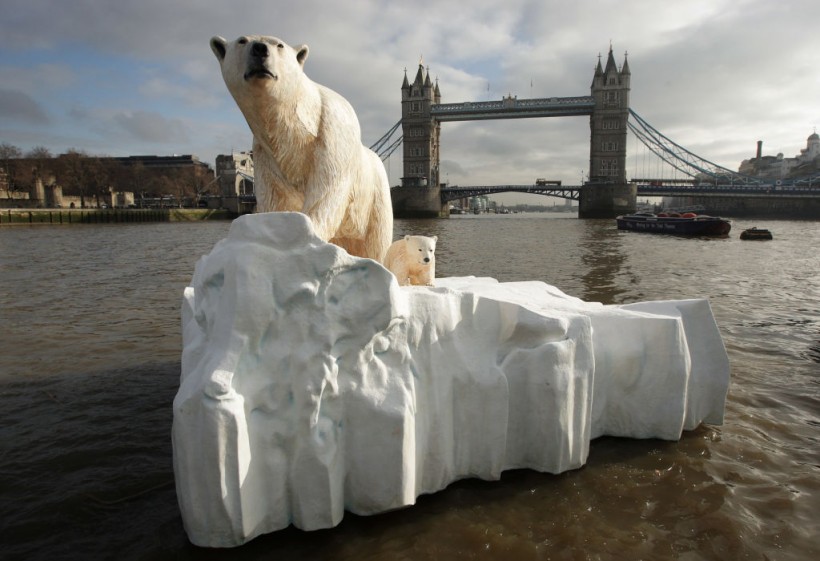There are still a few populations of polar bears present in the Arctic Circle. These animals take advantage of the sea ice across the region to hunt their favorite meals, seals. But in recent years, the ice caps have melted excessively due to human-induced activities. Before the spring season, there are already a few solid ices that the bears could jump in between, and the water freezes ahead of time by fall.
Polar Bears in Greenland Could Search Food Even if Hunting Cycle Disrupted by Global Warming

LONDON, ENGLAND - JANUARY 26: A 16-foot-high sculpture of a polar bear and cub, afloat on a small iceberg on the River Thames, passes in front of Tower Bridge on January 26, 2009, in London, England. The sculpture was launched to warn parliament members of the dangers of climate change and to launch Eden, a new natural history television channel.
The abnormal cycle of the seasons in the Arctic disrupts the natural routine that polar bears have had for thousands of years. Because of the confusion and stress brought by climate change, many of their population go hungry and eventually die.
In a new study, scientists saw a group of polar bears that seemingly evolved past the challenges brought by global warming. According to observations, these animals can survive even in the absence of sea ice.
The experts discovered that this group hunts from the ice that breaks off glaciers instead of the conventional waiting game beside waters where seals emerge to breathe.
These innovative polar bears are commonly found in the southeast regions of Greenland. The authors said that the group is a genetically distinct population that might have been isolated from the majority of polar bear lineages 200 years ago.
Previous studies suggest that our failure to stop the impacts of climate change would lead to species extinction by the end of the decade. According to the authors of the latest research, their findings have a minimal association with other polar bear groups that live without glacial ice.
The vast oceanic waters around the Arctic region are warming four times faster than other planets' seas.
University of Washington's polar research specialist and lead of the study, Kristin Laidre, explained in a CNN report that the findings they collected reveal that other polar bears could resist the effects of climate change, but a glacier habitat can't cater to a huge population of polar bears.
ALSO READ: Car Tires Tagged As Major Pollution Contributors, Not Exhaust Fumes
Glaciers Not Enough for Polar Bears, Population of Arctic Species Will Still Decline
Despite the workaround exhibited by this particular bear group, the glacier sites are not enough to fulfill their needs, and the rates of polar bear populations will still decrease in the following years because of the abnormal warming, Laidre continued.
The cycle of hunting polar bears starts when the freeze during fall occurs. The animals could walk across solid ice as they search for food and sit near the edge of waters while waiting for seals to surface for breathing.
In spring, ice thaws, and polar bears could survive between 100 and 180 days without consuming any food until the solid ice materializes again. The temperatures brought by the warming extend this period and starve the animals.
The separate group in southeast Greenland, which have approximately 300 individuals, could endure up to 250 days by utilizing huge glacier chunks that fall apart called glacial melange.
Experts said that Greenland has the authority to protect the undocumented polar bears examined in the study. On the other hand, the International Union for Conservation of Nature already considers recognizing the group as a subpopulation of polar bears.
The study was published in the journal Science, titled "Glacial ice supports a distinct and undocumented polar bear subpopulation persisting in late 21st-century sea-ice conditions."
RELATED ARTICLE: Space Bubbles Might Work as Massive Sunblock of Earth from Radiations to Mitigate Global Warming
Check out more news and information on Climate Change in Science Times.














